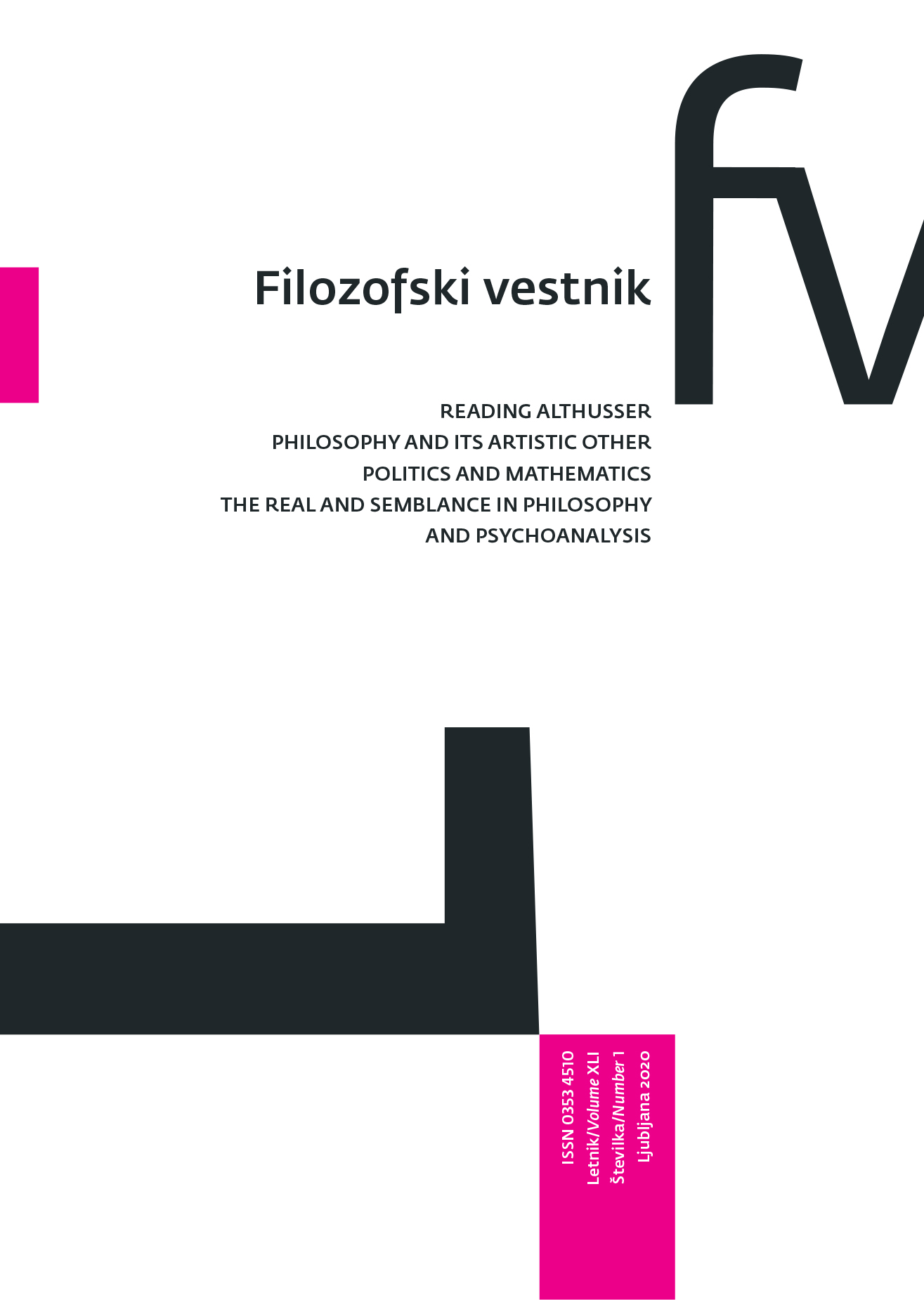Photography between Affective Turn and Affective Structure
DOI:
https://doi.org/10.3986/fv.41.1.07Keywords:
photography theory, aesthetics, affect, melancholy, index, Roland Barthes, Thierry de Duve, Jacques RancièreAbstract
The affective turn in photography theory takes as its point of departure Roland Barthes’s move from semiology to affective phenomenology in Camera Lucida. This article, however, considers the way affective phenomenology is itself grounded in the semiological structure of photography. It looks at how, before Camera Lucida was even written, Thierry de Duve had already discussed the affective implications of Barthes’s understanding of photography’s indexical nature. The article then proceeds to rethink the structural affectivity of photography beyond Barthes’s and de Duve’s emphasis on a direct relation between indexicality and loss. Reconsidering photography through Jacques Rancière’s conception of the aesthetic regime of art, the article rather puts emphasis on the indeterminacy of photography, which results from the way the camera captures and isolates a spatio-temporal fragment. Shifting the focus from indexicality to indeterminacy sheds a different light on the loss implied by the structure of photography, parallel to how Freud understood the difference between mourning and melancholy.
Downloads
References
Agamben, Giorgio, Stanzas. Word and Phantasm in Western Culture, trans. R. L. Martinez, University of Minnesota Press, Minneapolis 1993
Barthes, Roland, Camera Lucida. Reflections on Photography, trans. Richard Howard, Hill and Wang, New York 1981
Benčin, Rok, “Art Between Affect and Indifference in Hegel, Adorno, and Rancière”, Filozofski vestnik 40 (2019), No. 1
— “Proustian Developments: The World and Object of Photography”, SubStance 46 (2017), No. 3
Brown, Elspeth H. and Thy Phu, “Introduction”, in Feeling Photography, ed. Elspeth H. Brown and Thy Phu, Duke University Press, Durham 2014
de Duve, Thierry, “Time Exposure and Snapshot: The Photograph as Paradox”, October 5 (Summer, 1978), pp. 113–125
Elkins, James, What Photography Is, Routledge, New York 2011
Freud, Sigmund, “Mourning and Melancholia”, in The Standard Edition of the Complete Psychological Works of Sigmund Freud, Volume XIV, trans. J. Strachey, The Hogarth Press, London 1957, pp. 243–158
Kracauer, Sigfried, The Past’s Threshold. Essays on Photography, trans. C. Joyce, Diaphanes, Zurich 2014
Prosser, Jay, Light in the Dark Room. Photography and Loss, University of Minnesota Press, Minneapolis 2005
Proust, Marcel, The Guermantes Way, trans. C. K. Scott Moncrieff, http://gutenberg.net.au/ebooks03/0300411.txt (last accessed: 30 November 2020)
Rancière, Jacques, Aisthesis. Scenes from the Aesthetic Regime of Art, trans. Z. Paul, Verso, London 2013
— The Emancipated Spectator, trans. G. Elliott, Verso, London 2009
Smith, Shawn Michelle, “Photography between Desire and Grief: Roland Barthes and F. Holland Day”, in Feeling Photography, ed. Elspeth H. Brown and Thy Phu, Duke University Press, Durham 2014
Tisseron, Serge, La mystère de la chambre Claire. Photographie et inconscient, Flammarion, Paris 1996
Downloads
Published
How to Cite
Issue
Section
License
Authors guarantee that the work is their own original creation and does not infringe any statutory or common-law copyright or any proprietary right of any third party. In case of claims by third parties, authors commit their self to defend the interests of the publisher, and shall cover any potential costs.
More in: Submission chapter





